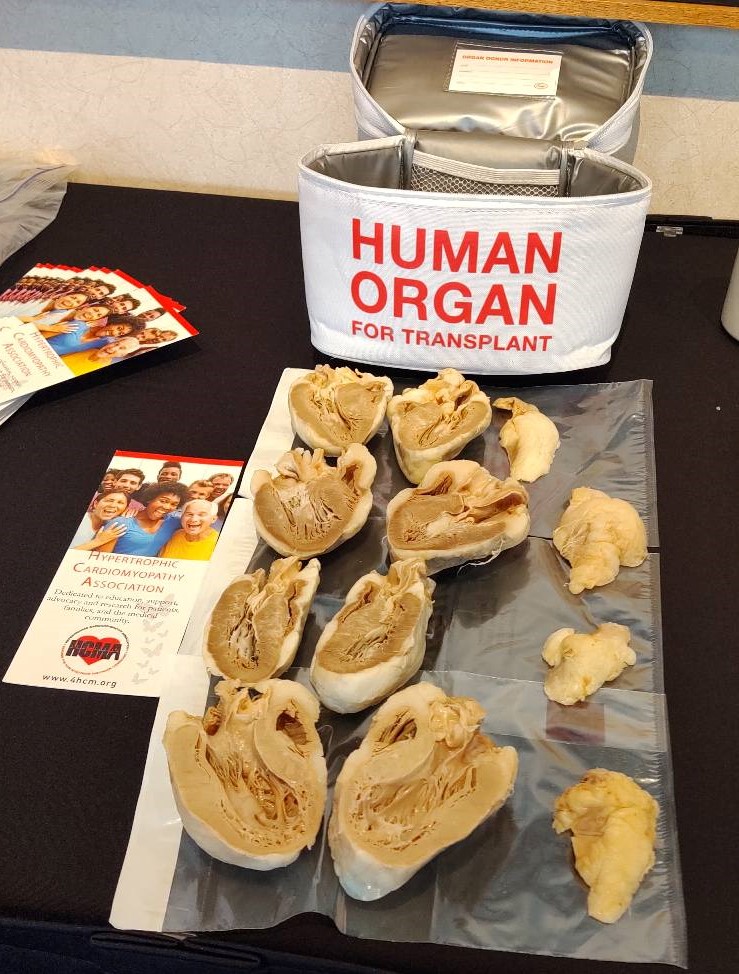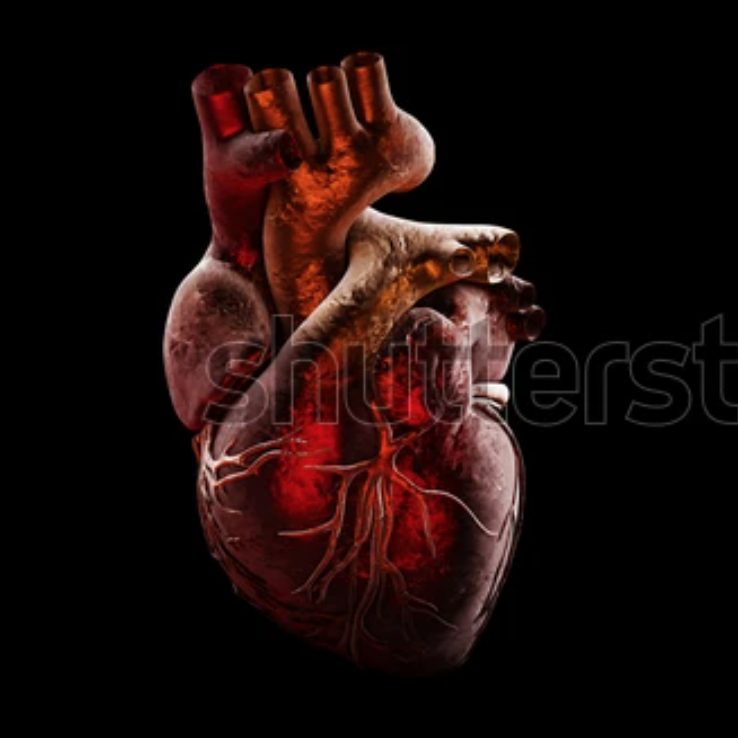Transplant
Overview: A heart transplant is a surgical procedure involving removal of a diseased heart and replacement with a healthy human heart from a donor.
Heart transplant is performed on those with severe heart failure. This can be caused by many different problems, including HCM, coronary artery disease, and other heart problems like valve diseases. It is a treatment of last resort, done after other treatments have failed. The goals are to extend your life and improve its quality.
HCMA 6/2021
Heart transplant is uncommon
Heart transplants in HCM are not common and are needed in fewer than 6% of the total HCM population. There are a few subsets of the HCM population that may require transplant. Those with severe systolic dysfunction - their hearts can't pump well - may be transplant candidates. So may those with severe diastolic dysfunction - their hearts can't fill well - may also be candidates. Much more rarely, those with severe and unstable arrhythmias - usually ventricular tachycardia - may also be considered.
Ejection fraction
How well is your heart pumping? One way this is measured is your left ventricular ejection fraction (LVEF), often abbreviated as just ejection fraction (EF). This number estimates the fraction of blood in the left ventricle that is squeezed out in an average heartbeat. It is expressed as a percentage. A normal EF is about 55-75%. EF often is confusing to patients. Because it is a fraction, it depends on both the numerator (the amount of blood pumped) and the denominator (the amount of blood in the ventricle). This means that your EF could decrease because the amount of blood in the ventricle increases while the same amount is pumped out. It could also decrease because the amount pumped out decreases. Decreases in EF can also be caused in more than one way.
EF is an important number, but by itself it doesn't tell you or your doctor everything that's necessary. One way to see this is to understand that diastolic dysfunction (reduced filling) tends to make the EF increase. Very high and very low EFs are both indications that something is wrong!
EF below about 40% is usually considered severe heart failure, although transplant is not normally done until EF is lower still. In diastolic dysfunction, the heart is unable to relax properly and fill between beats. Thus the EF may not decline. Diastolic dysfunction is often called heart failure with preserved ejection fraction.
Assessment for transplant
If your condition is serious and other treatments are not effective in managing your condition or symptoms, your cardiologist may send you to a heart transplant center for a transplant assessment.
Based on your assessment, you may be considered:
- suitable for a transplant, in which case you will be put onto the transplant waiting list. This means you could be called for a transplant at any time.
- suitable for a transplant, but the consultants do not think your condition is severe enough to warrant being put on the waiting list. If this happens your case will be reviewed regularly. If your condition gets worse, you will go on the waiting list.
- in need of further investigations or treatment. If your condition changes you can be assessed again.
- an unsuitable case for a heart transplant. This could be for a number of reasons. The transplant team will explain why you are not suitable and discuss how you can be treated further. You can also be referred to another center for a second opinion.
Waiting for transplant
If you are placed on the transplant waiting list, a suitable heart may become available within a few days or it may take many months or even years. Unfortunately, suitable hearts do not become available for everyone. Only a fraction of people receive the heart transplant they require. In the US, adults and children can wait over a year for a transplant based upon factors such as blood type, body type and BMI (Body Mass Index).
Listing for transplant is with a regional transplant center. The reason is that hearts last only a short time once removed from a donor's body. No matter how good the match between you and a potential donor heart, you must be within a relatively short distance for a transplant to be possible. This also means that you must be available to be contacted, and ready to go for surgery, if the center calls you with the news that a suitable heart is available. It is essential to carry a mobile phone and to let the center know if you must leave the area.
It's natural for you to feel excited, emotional or anxious about your surgery and life afterwards. Remember that a transplanted heart is no more than a new pump - it does not change your personality or behaviors.
The procedure
A heart transplant operation usually takes between four and six hours:
- At the start of the procedure you'll be given a general anesthetic.
- The surgeon will make a cut in your breastbone to get access to your heart. You will be connected to a heart-lung bypass machine which makes the blood circulate around your body.
- Your surgeon will then work on transplanting your new heart.
- When this is finished, they will start your new heart beating again. When your heart begins to take over pumping and your condition is stable, the heart-lung machine will be turned off.
- The surgeon will then close your breastbone with wire, which will stay there for the rest of your life.
Hospital stay
After the operation you will be moved to the intensive care unit. Most people wake the following day. You will be sedated and breathe with the help of a ventilator machine until you are able to breathe for yourself.
Length of the hospital stay varies. Some people are able to leave within a week. More commonly a stay of two weeks or more is needed.
Recovery after surgery
In the first few months after your surgery you will need to spend a lot of time visiting the hospital - you might even need to stay near the transplant center. Your transplant team will talk to you about practical arrangements for after your surgery. Although you will be weak after the operation, recovery can be very quick. It is important to build up your level of activity gradually. You should avoid activities involving lifting and pushing until your breastbone is fully healed, which can take up to three or four months. Once you feel fit and able, you can start doing things like light vacuuming or light gardening.
Once you've recovered from surgery you should be able to return to a wide range of activities including driving, and physical activity - some people are even able to go back to work.
Lifelong issues
You will need to take a number of medicines, including immunosuppressants, for the rest of your life. Without them your body would rapidly recognize your new heart as 'foreign' and try to reject it. This type of medicine can have side-effects which your doctor will discuss with you. Because you will be taking immunosuppressants, you will be much more susceptible to contagious diseases and will need to take precautions against infection.
Many people who have had a successful heart transplant go on to live long and healthy lives. Over three-quarters of heart transplant patients live for over five years.
It is important to remember that while you no longer have HCM, you have exchanged one set of medical issues for new ones. Transplant is not like replacing a bad part in your car! Managing your new heart is a responsibility and it must be taken as seriously as you took your HCM.


HCM - THE DISEASE

FINDING CARE

EDUCATION & SUPPORT






